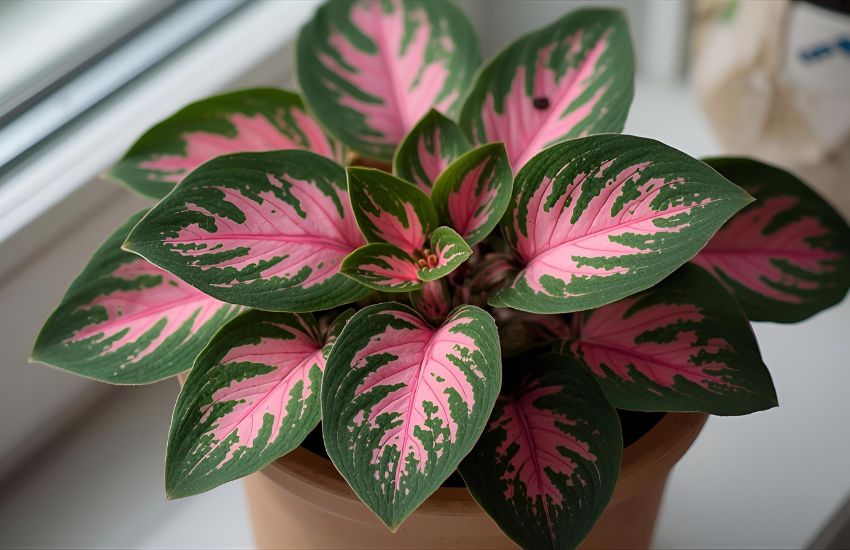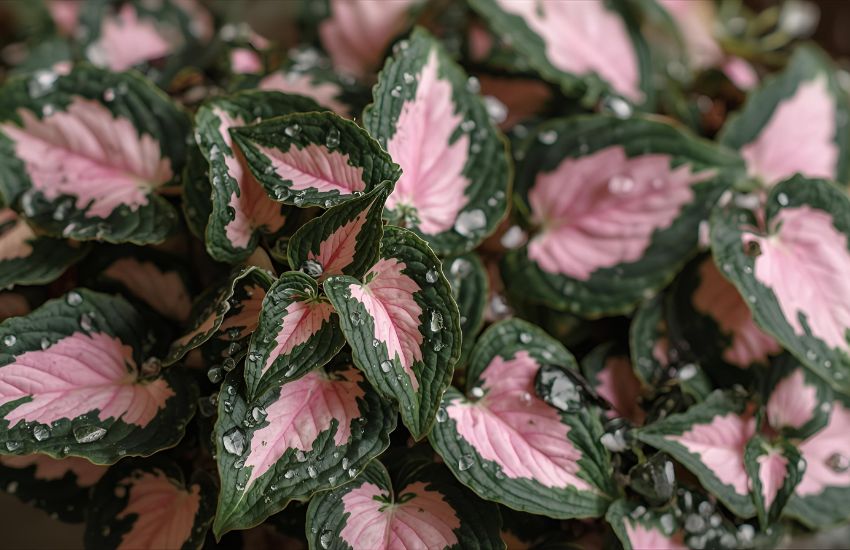The delicate pink-veined foliage of the Fittonia Pink Plant can transform any indoor space into a vibrant, calming corner, but growing this striking houseplant in your pot requires careful attention. You will notice that Fittonia albivenis thrives in a humid environment and suffers when soil becomes soggy or when exposed to direct sunlight. Providing the right balance of indirect light and maintaining high humidity is essential to keep the foliage lush and healthy.
When you place your Fittonia in a well-draining pot or even a terrarium, you create a controlled environment that supports its natural tropical growth. Regular pruning helps manage its size and encourages fuller growth, while occasional fertilizer ensures your plant receives the nutrients it needs. Being mindful of humidity and light conditions allows you to enjoy the rich colors of its veined leaves without stress.
In this guide, you will learn practical tips on watering, pruning, and positioning your Fittonia Pink Plant, as well as how to use a pot or terrarium effectively to maintain a humid, vibrant environment. By following these steps, you can cultivate a healthy, eye-catching houseplant that thrives indoors.
How to Prune and Maintain Your Fittonia Pink Plant in a Pot

Maintaining your Fittonia Pink Plant, often called the pink angel or nerve plant, requires attention to both its unique veined foliage and its delicate growth habits. These indoor plants are prized for their low-growing, ground cover appeal and leaves with contrasting veins, often in pink or white veins that stand out against dark green leaves. Proper pruning and care ensure your fittonias remain vibrant and healthy.
Pruning for Healthy Growth
If you notice leggy stems or limp leaves, it’s time to prune. Carefully trim back overgrown or creeping stems to encourage bushier growth and prevent the plant from looking sparse. Removing dead or yellowing leaves also helps reduce leaf drop and keeps the plant tidy. Pruning during the growing season allows the pink veins and contrasting coral pink edges to remain prominent.
Repotting and Potting Mix Considerations
When your nerve plant has outgrown its pot or the soil has become compacted, repot it into fresh potting mix with good drainage. Avoid soggy soil, which can lead to root rot, and ensure your pot allows excess water to escape. Repotting every 1–2 years helps maintain strong growth and healthy foliage.
Fertilizing and Nutrient Care
To care for Fittonia effectively, use a houseplant fertilizer diluted to half strength or fertilizer diluted to half during the winter months, when growth slows. This ensures your plant receives essential nutrients without stressing its roots. A half-strength solution promotes steady growth and supports leaves with contrasting veins.
Managing Humidity and Environment
Fittonias thrive in high humidity, so placing your plant in a steamy bathroom, near a humidifier, or under grow lights can help maintain enough humidity. Avoid direct midday sun, which can scorch dark green leaves, and monitor humidity levels to prevent leaf drop or limp leaves. If your soil is dry, water promptly but avoid leaving the potting mix soggy.
By following these guidelines, you can ensure your Fittonia Pink Plant flourishes as a beautiful, low-growing houseplant, showcasing its pink veins and lush foliage while maintaining a tidy, healthy form in your indoor space.
Repotting Your Nerve Plant: When and How to Do It Safely

Repotting your nerve plant, known for its vibrant veined leaves, is a key step in ensuring it thrives as a creeping ground cover or a tabletop showpiece. Fittonias, with their bright white veins and occasional lime green foliage, flourish in a humid environment and require careful handling during repotting to maintain their delicate structure.
When to Repot
You should consider repotting when the plant has outgrown its current container, roots begin to emerge from drainage holes, or the soil appears compacted. Typically, repotting every 1–2 years keeps your plant healthy. Ensure the top inch of soil is allowed to dry before moving to prevent root stress. Plants in a terrarium setting can become an absolute showstopper in a tabletop display once refreshed in a fresh potting mix.
Choosing the Right Pot and Soil
Select a pot with adequate drainage holes to prevent soggy roots. Use fresh potting soil with a low to medium nutrient level, which supports healthy growth without overwhelming the plant. Fittonias prefer bright indirect light rather than direct sun, which can scorch their delicate leaves.
Repotting Steps
Gently remove the plant from its current pot, keeping the root system intact. Shake off old soil and place the plant into the new container filled with fresh potting mix. Lightly water and position it where it can thrive in a humid environment. You can boost the humidity around the plant with a steamy bathroom placement or a nearby humidifier to maintain optimal growth.
Post-Repot Care
After repotting, allow your nerve plant to acclimate before fertilizing. Use general houseplant fertilizer diluted to half strength to avoid shocking the roots. Regular care and maintaining bright indirect light will help your plant continue to display its stunning veined leaves and white than green foliage while keeping it a vibrant, creeping ground cover or an eye-catching tabletop addition.
Conclusion
Caring for your Fittonia Pink Plant ensures it remains an evergreen perennial that adds vibrant color and texture to your indoor space. By providing bright indirect light filtered through a sheer curtain, keeping the soil moist but not soggy, and positioning your plant in a humid spot away from cold drafts, you encourage the growth of healthy new leaves and prevent common issues like mealybug infestations.
Using orchid bark in your potting mix can improve drainage, while regular monitoring of soil moisture helps your nerve plant thrive. Although Fittonias are primarily grown for their striking foliage, some varieties may even produce delicate flower spikes under optimal care.
By following these practical tips and maintaining a steady, humid environment, you can enjoy the contrasting veins and low-growing beauty of your Fittonia Pink Plant for years to come. Start repotting, pruning, and adjusting humidity today to transform your indoor plants into a lush, thriving display. Bring your pink angel to life and elevate your indoor space now—your nerve plant is waiting!
Frequently Asked Questions (Fittonia Pink Plant Care: Tips for Growing the Nerve Plant in Your Pot)
How to take care of fittonia Nerve plant?
To care for a Fittonia Nerve Plant, keep it in bright, indirect light and maintain consistently moist, well-draining soil. High humidity is essential, so mist regularly or use a humidifier. Avoid direct sunlight, cold drafts, and overwatering to prevent leaf damage and promote healthy growth.
How often should I water a fittonia Nerve plant?
Water your Fittonia (Nerve Plant) regularly to keep the soil consistently moist but not soggy. Typically, watering once every 3–4 days works well, but adjust based on humidity, temperature, and pot size. Reduce watering slightly in cooler months to prevent root rot.
Do nerve plants need big pots?
Nerve plants (Fittonia) do not require big pots. They prefer small to medium-sized containers that allow their roots to stay slightly crowded. Using oversized pots can lead to waterlogging and root rot. Choose a pot with good drainage to support healthy growth and vibrant foliage.
How to make a Nerve plant bushier?
To make a Nerve plant bushier, regularly pinch or trim the growing tips to encourage branching. Ensure it receives bright, indirect light and consistent moisture without waterlogging. Feeding with a balanced liquid fertilizer during the growing season also promotes fuller, healthier foliage and compact growth.
